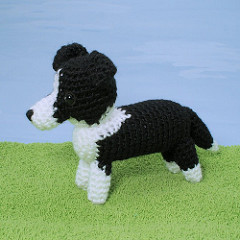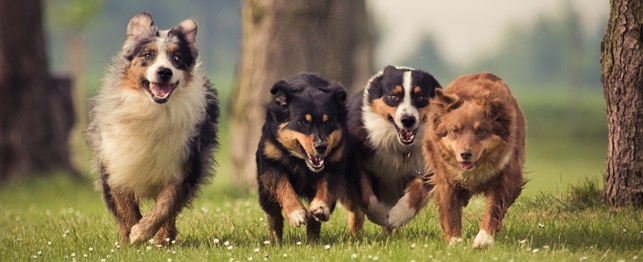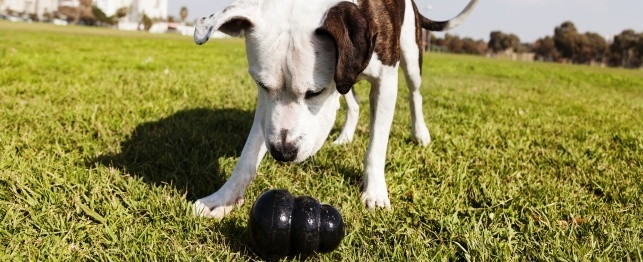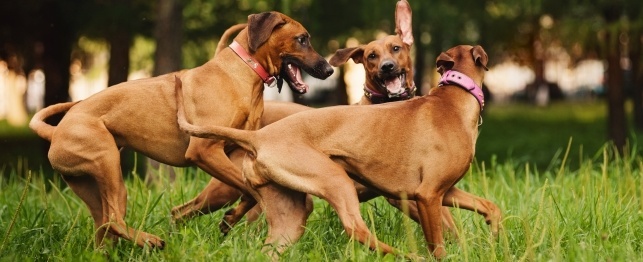Separation anxiety is a problem that many dog owners have to contend with on a daily basis. Anxiety may cause a dog to act out in a number of ways. Some are mild reactions like obsessive whining, others are severe, like self mutilation and destruction of property.
The Sources of Dog Separation Anxiety
Dogs are social, and sociable, animals. They build strong bonds with members of their human "pack", and hate being left on their own. However, a chief cause of the anxiety is based on their recognition of the actions you take before you leave.
You probably have familiar rituals that you go through as you prepare to leave the house. Every day you repeat these behaviors and, as your dog recognizes the pattern, he starts to become increasingly anxious.
Reducing Dog Separation Anxiety
There are many ways to reduce the anxiety your dog experiences whenever you leave the house. Depending on the intensity of the problem, it may be relatively easy to fix. Here are a few of the easiest fixes.
Change Your Routine - A good place to start is by changing your regular routines. If your dog starts acting up the minute you do a particular action, he has likely marked that action as a sign you are about to leave.
Mixing up your routine means the dog no longer sees a recognizable pattern. As a result there is no anxiety trigger.
Don't Reinforce It - When you lavish attention on your dog every time you leave or get home, you are only reinforcing the behavior. You have to remove any connection between the dog receiving attention and you leaving or coming back home.
The easiest way is to keep your departures low key, and then ignore your dog for 10-15 minutes after you arrive home. Many people think this is cruel, but it is far better than the dog getting himself into a state of anxiety while you are out.
Building Up Anxiety "Endurance" - One way of treating separation anxiety is to change the dog's expectations of how long you'll be away and when you'll be returning. Help your dog accept being alone by getting him gradually used to your absence.
At first, leave for just a few seconds and then come back in. Once he sees that you return each time, you can stretch out how long you are able to leave him alone.
It's Not Cruel
A common misconception is that the aforementioned measures are cruel. But in truth, you are addressing a condition that causes your dog a great deal of distress. Reducing canine separation anxiety can only be good for his health - both physical and mental.
If your dog suffers anxiety problems, it is important to address them right away. If the behavior is confined to whining, barking and jumping up, then the advice given above should definitely help.
On the other hand if the dog is causing damage to your property and/or injuring himself, you should consult your vet or speak to a professional dog trainer.

 Train Your Border Collie Dog With These Helpful Hints
The day your new puppy comes home with you will be filled
Train Your Border Collie Dog With These Helpful Hints
The day your new puppy comes home with you will be filled
 How To Use Vibration Dog Training Collars
All dogs need training at least, no matter how smart the do
How To Use Vibration Dog Training Collars
All dogs need training at least, no matter how smart the do
 Parks & Recreation: 7 Tips for Enjoying Dog Parks
Parks & Recreation: 7 Tips for Enjoying Dog P
Parks & Recreation: 7 Tips for Enjoying Dog Parks
Parks & Recreation: 7 Tips for Enjoying Dog P
 Commercial Brain Games Challenge Your Dog
Commercial Brain Games Challenge Your Dog
Commercial Brain Games Challenge Your Dog
Commercial Brain Games Challenge Your Dog
 Dogs Play at the Park
Dogs Play at the Park
Dogs Play at the Park
Dogs Play at the Park